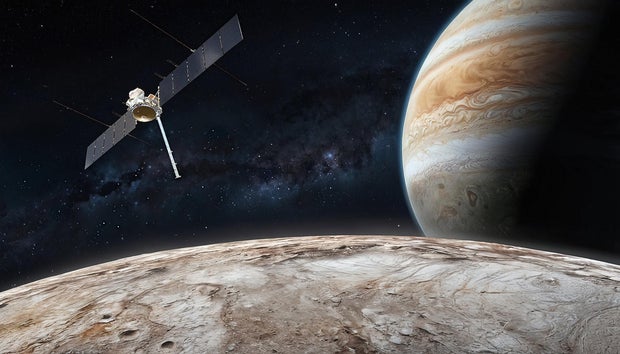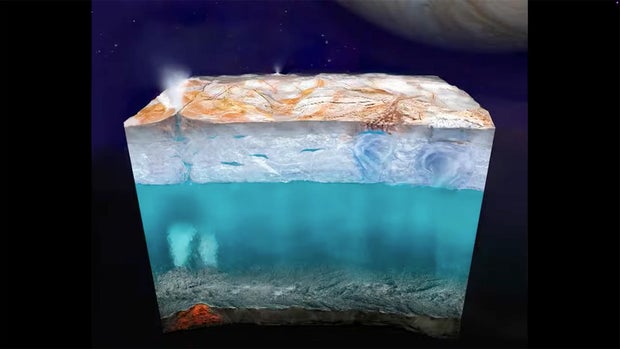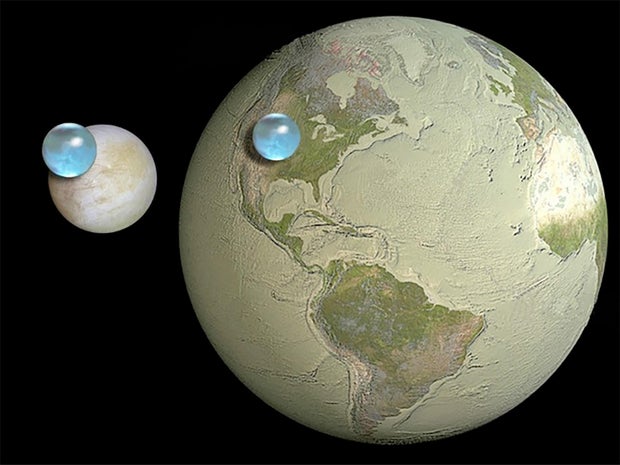CBS News
Pennsylvania’s mail-in ballot process could cause vote count lag | 60 Minutes

Republican Al Schmidt, Pennsylvania’s top election official, has crisscrossed his state in a campaign to spread the gospel of election security, four years after former President Donald Trump disputed the ballot count.
The swing state, with its 19 electoral votes, is critical to the campaigns of both Trump and Vice President Kamala Harris. It’s also a state with a law that prevents the early processing of mail-in ballots, which dragged out the state’s count in 2020. The anticipated lag this year has election officials bracing for conspiracy theories, protests and violence.
“That window of time between the polls closing and races being called, I think, has shown to be a real vulnerability, where people seeking to undermine confidence in those results if they’re going to lose have really exploited,” Schmidt said.
Pennsylvania’s mail-in ballot process
Unlike many other states, Pennsylvania can only begin processing mail-in ballots on the morning of Election Day.
It took four days to call the election in Pennsylvania in 2020. As those days passed, leaving the 2020 election results hanging in the balance, all eyes were on the Pennsylvania Convention Center in Philadelphia. Police and protesters were outside while Schmidt and his fellow members of the Board of Elections oversaw the counting of a record 375,000 mail-in ballots, most of them from Democratic voters.
“When you have half of your voters vote by mail, like we did in 2020, counting those votes takes time,” Schmidt said.
60 Minutes
At a ballot intake center in Chester County, elections administrator Karen Barsoum showed the two different envelopes each mail-in ballot arrives in.
“So, hypothetically speaking, if we have 100,000 mail-in ballots, we have to deal with double the amount of the envelopes, which is a long process,” Barsoum said.
Then the ballot comes out and it needs to be unfolded and flattened out to remove creases. In all, it takes several minutes to process each mail-in ballot.
Conspiracy theories take off
Hours after the polls closed in 2020, then President Trump demanded the counting stop. Schmidt happened to be passing by a TV and heard Trump’s speech.
“We don’t want them to find any ballots at 4 o’clock in the morning and add them to the list, OK?” Trump said at the time.
Schmidt brought together his communications team so they could reassure voters that the count would continue. Allegations of fraud spread as the mail-in ballots were counted.
“That’s when you start hearing about truckloads of ballots. And that’s when you start hearing about, you know, zombie voters,” Schmidt said. “That’s when all this other stuff really starts pouring in.”
At the end of Pennsylvania’s days-long count, the state was called for Joe Biden and, with that, he won the White House. But Trump continues to say that he won Pennsylvania in both 2016 — when he won by about 44,000 votes — and in 2020, when he lost by about 80,000 votes.
“I understand that he’s a sore loser,” Pennsylvania Gov. Josh Shapiro said. “I understand that he wished he would have won in 2020. But attacking this system made up of our neighbors from communities all across Pennsylvania, Republican and Democrat alike, is not the answer.”
Calls for reform, patience and faith
In the wake of those four days in 2020, there were widespread calls to bring Pennsylvania in line with the majority of other states, where election workers get a head start on opening envelopes and flattening mail-in ballots ahead of Election Day.
“Pennsylvania’s unique in that we have a divided legislature. We have a Democratic House and a Republican Senate,” Schmidt said. “So getting anything done related to election reform has certainly been a challenge.”
He has urged people to be patient with Pennsylvania.
“Our counties are working night and day to count their voters’ votes,” Schmidt said. “They’re doing so as quickly as they can, and with integrity.”
In the leadup to Election Day, Schmidt is doing everything he can to take on the fears Trump continues to spread about Pennsylvania and to assure residents their votes will count.
“Elections in Pennsylvania have never been more safe and secure with a voter verified paper ballot record of every vote that’s cast, whether you vote in person on Election Day or you vote by mail,” Schmidt said.
Shapiro appointed Schmidt, who previously worked for a decade on Philadelphia’s Board of Elections, to the role of secretary of state last year. The governor was succinct when asked what Schmidt’s marching orders were.
60 Minutes
“Do your job,” Shapiro said he told Schmidt. “Make it so legal, eligible voters have access to the ballot box and that we again have a free and fair, safe and secure election.”
Schmidt is now visiting each of Pennsylvania’s 67 counties and meeting with voters. At a fair in deep red Columbia County, Schmidt spent more than 35 minutes trying to convince local Republicans that they can trust the voting system.
“Everything is on the line”
A recent poll found around a third of Americans – and nearly 70% of Republicans – still believe Biden didn’t legitimately win the 2020 election. Trump has refused to commit to accepting the results if he loses in November. If that happens, it could cause violence in the state, Shapiro said. It could also mean election officials face threats from Trump supporters.
“Am I worried about that? Am I concerned about that? Of course I am,” Shapiro said.
Schmidt was threatened by Trump supporters after the 2020 vote when Trump called him out by name in a Twitter post.
“There were threats early on that were pretty generic in nature,” Schmidt said. “As days went on, they became a lot more specific.”
Those threatening him put out his address and graphically described what they would do to his family, Schmidt said. A picture of his home was shared and his children’s names were listed repeatedly. Schmidt temporarily moved his family for their safety. There was round-the-clock security for months.
Still, Schmidt is sticking with his job.
“Everything is on the line,” he said. “Our entire system of government, our country as it was founded, is on the line.”
CBS News
10/13: CBS Weekend News – CBS News

Watch CBS News
Be the first to know
Get browser notifications for breaking news, live events, and exclusive reporting.
CBS News
$5.2 billion NASA probe to assess habitability of sub-surface ocean on moon of Jupiter

One day after launching a Starship rocket on a dramatic test flight in Texas, SpaceX readied a Falcon Heavy rocket for launch Monday from Florida to send a $5.2 billion NASA probe on a 1.8-billion-mile voyage to Jupiter to find out if one of its moons hosts a habitable sub-surface ocean.
If all goes well, the Europa Clipper will brake into orbit around Jupiter in April 2030, setting up 49 close flybys of the frigid moon Europa, an ice covered world with an interior warmed by the relentless squeezing of Jupiter’s gravity as it swings around the giant planet in a slightly elliptical orbit.
NASA
Data from previous missions and long-range studies from Earth indicate a vast salt-water ocean lurks beneath the moon’s frozen crust, providing a possibly habitable environment. Whether microbial life exists in that ocean is unknown, but the Europa Clipper’s instruments will try to find out if it’s at least possible.
“Europa is an ice covered moon of Jupiter, about the size of Earth’s moon, but believed to have a global subsurface ocean that contains more than twice the water of all of Earth’s oceans combined,” said Project Scientist Robert Pappalardo.
“We want to determine whether Europa has the potential to support simple life in the deep ocean, beneath its icy layer,” he said. “We want to understand whether Europa has the key ingredients to support life in its ocean, the right chemical elements and an energy source for life.”
NASA originally planned to launch the Clipper last week, but mission managers ordered a delay to avoid Hurricane Milton, which swept across Cape Canaveral on Thursday. An additional one-day slip was ordered to resolve a technical issue and while details were not provided, the rocket was cleared for launch.
Liftoff from historic pad 39A at the Kennedy Space Center was targeted for 12:06 p.m. EDT Monday. Generating more than 5 million pounds of thrust, the triple-core Falcon Heavy, the most powerful operational rocket in the SpaceX inventory, will boost the 12,800-pound Europa Clipper to the velocity needed to break free of Earth’s gravity.
While SpaceX normally recovers first stage boosters for refurbishment and reuse, all three core boosters and the rocket’s second stage will use all of their propellants to accelerate the Clipper to the required Earth-departure velocity. As such, no first stage recoveries are possible.
“Falcon Heavy is giving Europa Clipper its all, sending the spacecraft to the farthest destination we’ve ever sent, which means the mission requires the maximum performance. So we won’t be recovering the boosters,” said Julianna Scheiman, SpaceX director of NASA science missions.
“I don’t know about you guys, but I can’t think of a better mission to sacrifice boosters for where we might have an opportunity to discover life in our own solar system.”
To get to Jupiter, the Clipper will first fly past Mars on March 1, using the red planet’s gravity to boost its speed and bend the trajectory to send the probe back toward Earth for another gravity-assist flyby in December 2026. That will finally put the Clipper on course for Jupiter.
NASA
If all goes well, the probe will brake into orbit around Jupiter on April 11, 2030, using the gravity of the moon Ganymede to slow down before a six- to seven-hour firing of the probe’s thrusters. The first of 49 planned flybys of Europa, some as low as 16 miles above the surface, will begin in early 2031.
The mission is expected to last at least three years with the possibility of an extension depending on the spacecraft’s health.
In either case, the Clipper will end its voyage with a kamikaze descent to Jupiter’s moon Ganymede to prevent any chance of a future uncontrolled crash on Europa that might bring earthly microbes to the moon and its possibly habitable sub-surface environment.
“The spacecraft faces some big challenges,” Pappalardo said. “The distance of Jupiter is five times farther from the sun than the Earth is. That means it’s very cold out there, and there’s only faint sunlight to power the solar arrays. So they’re huge.”
Once deployed, the 13.5-foot-wide solar arrays will stretch more than 100 feet from end to end — more than the length of a basketball court — with two radar antennas extending 58 feet from each array.
Power requirements aside, Jupiter’s powerful magnetic field “acts like a giant particle accelerator at Europa,” he said. “A human would receive a lethal dose of radiation in just a few minutes to a few hours, if exposed to that environment.”
The Clipper was designed to withstand repeated doses of extreme radiation while making close flybys of Europa, housing its flight computer and other especially sensitive gear inside a vault shielded by sheets of aluminum-zinc alloy.
But engineers were dismayed to discover earlier this year that critical electrical components used throughout the spacecraft failed at lower levels of radiation than expected.
Engineers and managers held a major review to determine how that might affect the Clipper and eventually concluded the spacecraft could minimize radiation-induced degradation by slightly changing the way the flybys are executed. The only alternative was to delay the launch for several years to replace the suspect components.
Mission scientists were eager to finally get the long-awaited mission underway.
“What would be the greatest outcome? To me, it would be to find some sort of oasis, if you like, on Europa where there’s evidence of liquid water not far below the surface, evidence of organics on the surface,” Pappalardo said. “In the future, maybe NASA could send a lander to scoop down below the surface and literally search for signs of life.”
NASA
As for what sort of life might be possible below the moon’s frozen surface, “we’re really talking simple, like single-celled organisms,” he said. “We don’t expect a lot of energy for life in Europa’s ocean like we do here on the surface of Earth.
“So we don’t expect fishes and whales and that kind of thing,” he added. “But we’re interested in could Europa support simple life, single-celled organisms?”
The Clipper is equipped with nine state-of-the-art instruments, including narrow- and wide-angle visible light cameras that will map about 90% of Europa’s surface, imaging details down to the size of a car. An infrared camera that will look for warmer regions where water may be closer to the surface or even spewing into space.
“The cameras will observe over 90% of Europa’s surface at a resolution of less than 100 meters to a pixel, or 325 feet,” said Cynthia Phillips, a project staff scientist at the Jet Propulsion Laboratory. “That’s about the size of a city block.
“The narrow-angle camera will be able to take pictures at a resolution as high as half a meter per pixel. That’s about 1.6 feet. And so it will be able to see car-sized objects on the surface of Europa.”
Two spectrometers will study surface chemistry and the composition of the moon’s ultra-thin atmosphere, on the lookout for signs of water plumes and other ocean-driven features. Two magnetometers will probe the sub-surface ocean by studying electrical currents induced by Jupiter’s magnetic field.
An ice-penetrating radar will “see” up to 19 miles beneath the icy crust to look for pockets of water in the ice and helping scientists understand how the ice and water interact with the presumed ocean.
“Those signals will penetrate through into the subsurface, where they may be able to bounce off a liquid water layer, such as a lake within the icy shell, or maybe even penetrate all the way through, depending on how thick the surface ice layer is and other factors, such as its structure and composition,” Phillips said.
“The radar could be able to penetrate as deep as 30 kilometers. That’s about 19 miles below the surface.”
Two other instruments will study gas and dust particles on the surface and suspended in the atmosphere to analyze their chemical makeup. Finally, scientists will measure tiny changes in the probe’s trajectory, allowing them to glean details about Europa’s internal structure.
“We know of our Earth as an ocean world, but Europa is representative of a new class of ocean worlds, icy worlds in the distant outer solar system where saltwater oceans might exist under their icy surfaces,” Pappalardo said. “In fact, icy ocean worlds could be the most common habitat for life, not just in our solar system, but throughout the universe.
“Europa Clipper will, for the first time, explore such a world in depth. … We’re at the threshold of a new era of exploration. We’ve been working on this mission for so long. We’re going to learn how common or rare habitable icy worlds may be.”
CBS News
10/13/2024: Pennsylvania Counts; The Vatican’s Orphans; Ballmer’s Ballgame

Watch CBS News
Be the first to know
Get browser notifications for breaking news, live events, and exclusive reporting.













